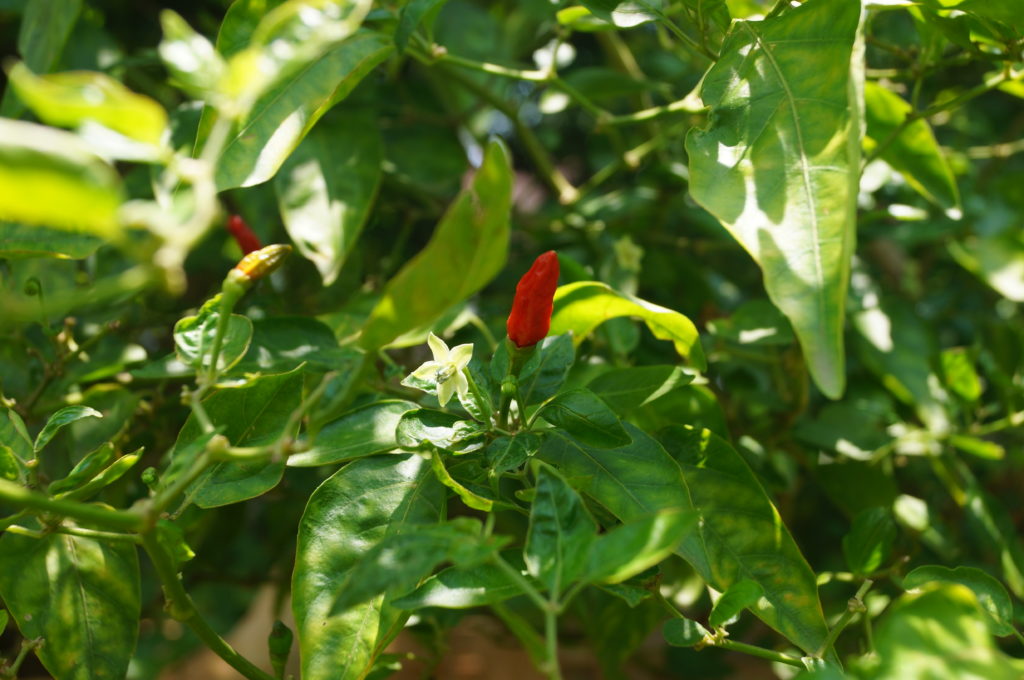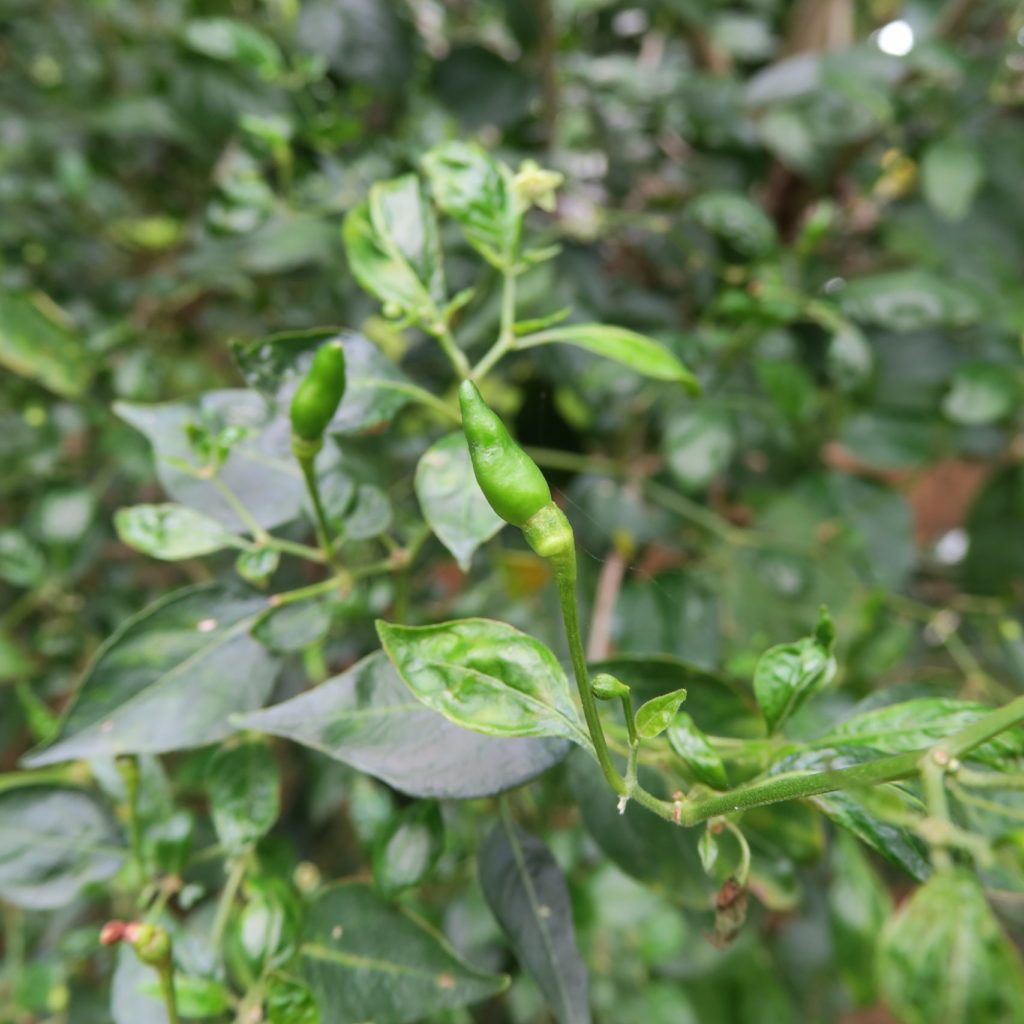
Kanthari Mulagu is a variety of Bird’s Eye Chilli that is grown in parts of Kerala, Meghalaya and Assam. The chilli is tiny, deceptively hot, and is used extensively in the local cuisine. Once the chilli has ripened and turned red, its seeds are often picked by birds, hence the name Bird’s Eye Chilli.
The flowers of this plant grow towards the ground and the chillies grow towards the sky. The one pictured is red, but we usually pick them when they’re green since the ripe red ones are far too spicy for our liking. You can, however find a variety of colours in the market, the most prized being the white bird’s eye chilli.

Growing Bird’s Eye Chilli
The plant is pretty easy to grow, doesn’t require a lot of sunlight and is perennial, bearing fruit throughout the year. It does need constant watering during the summer seasons and it lasts anywhere between 4-7 years.
Along with being
Seeds from red, ripe chillis are used to sow new plants. In nature, the seeds are germinated through bird droppings, losing their outer membrane when passing through the intestines of birds. This process is replicated with the help of hot water. The seeds are plucked and immersed in hot water where the hollow seeds float to the top. These are discarded along with the outer membranes of the viable seeds. The seeds are then dried overnight in a mixture of Mango leaf ash and are finally ready for planting.
Spicy or not?
At one time, the bird’s eye was considered to be the hottest
While this chilli may not be as spicy as a habanero, boy can the raw chillies BURN your skin! If I’m cutting chillies for a recipe, kneading anything mix with chillies, or even just eating a really spicy curry my hands are immediately on FIRE. Washing my hands every hour has made the problem

A particularly popular use for Kanthari is in a chutney ground with raw onions and curry leaves and topped with coconut oil. The perfect vehicle for this chutney? Kappa of course! Kappa (tapioca) is boiled with turmeric and salt and the heat of the chutney perfectly balances the starchy-ness of the tapioca.

Bring on the heat!

